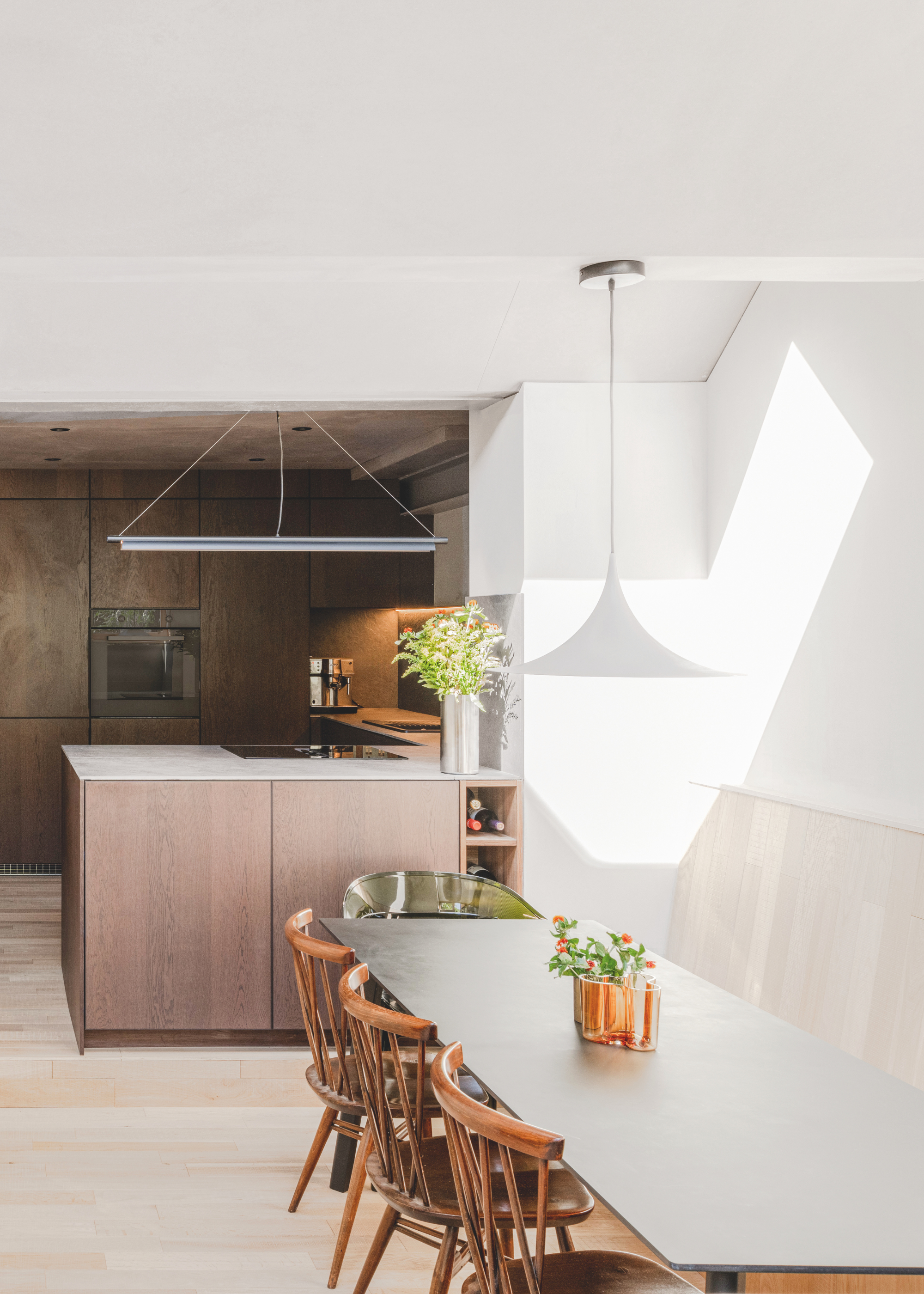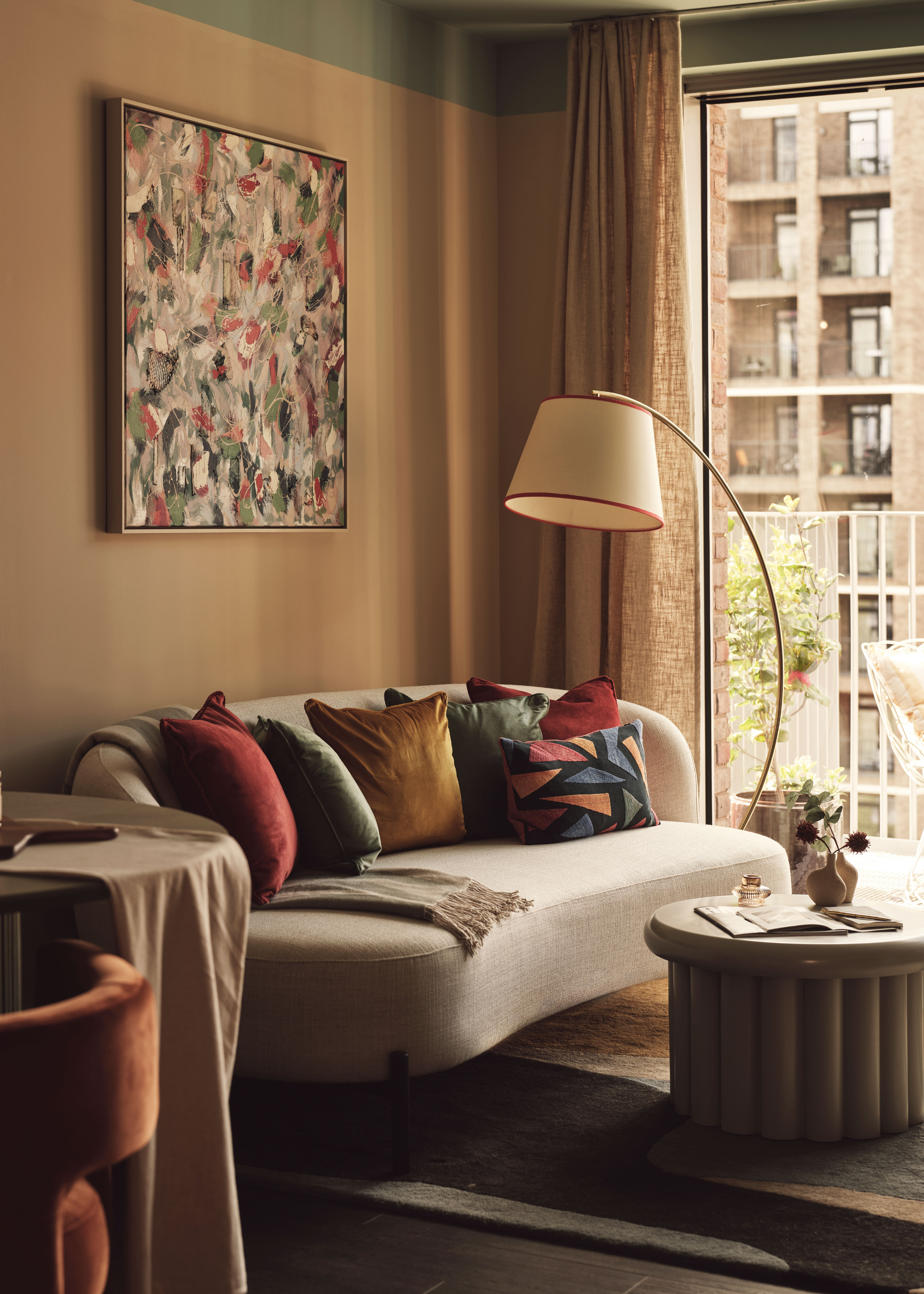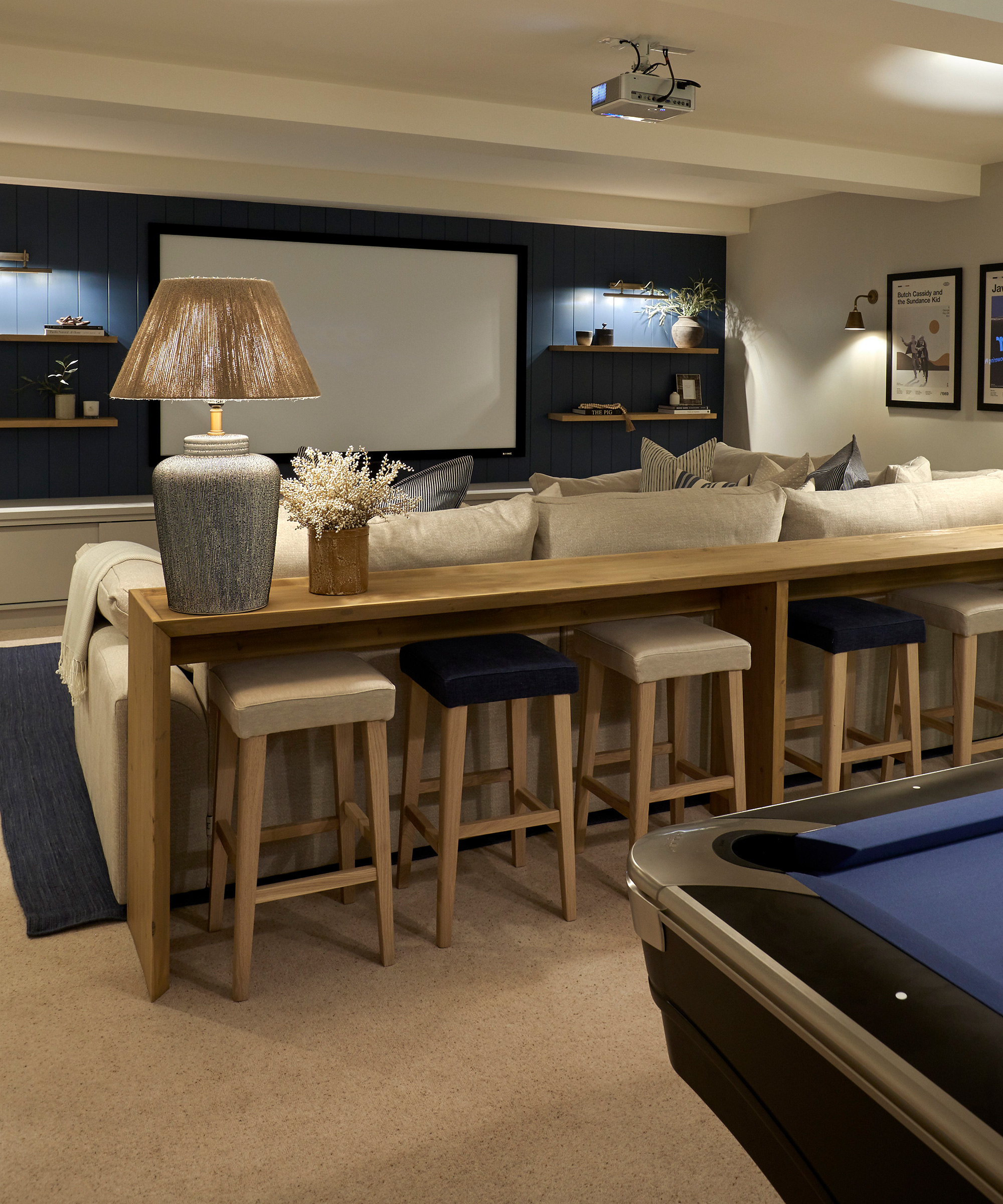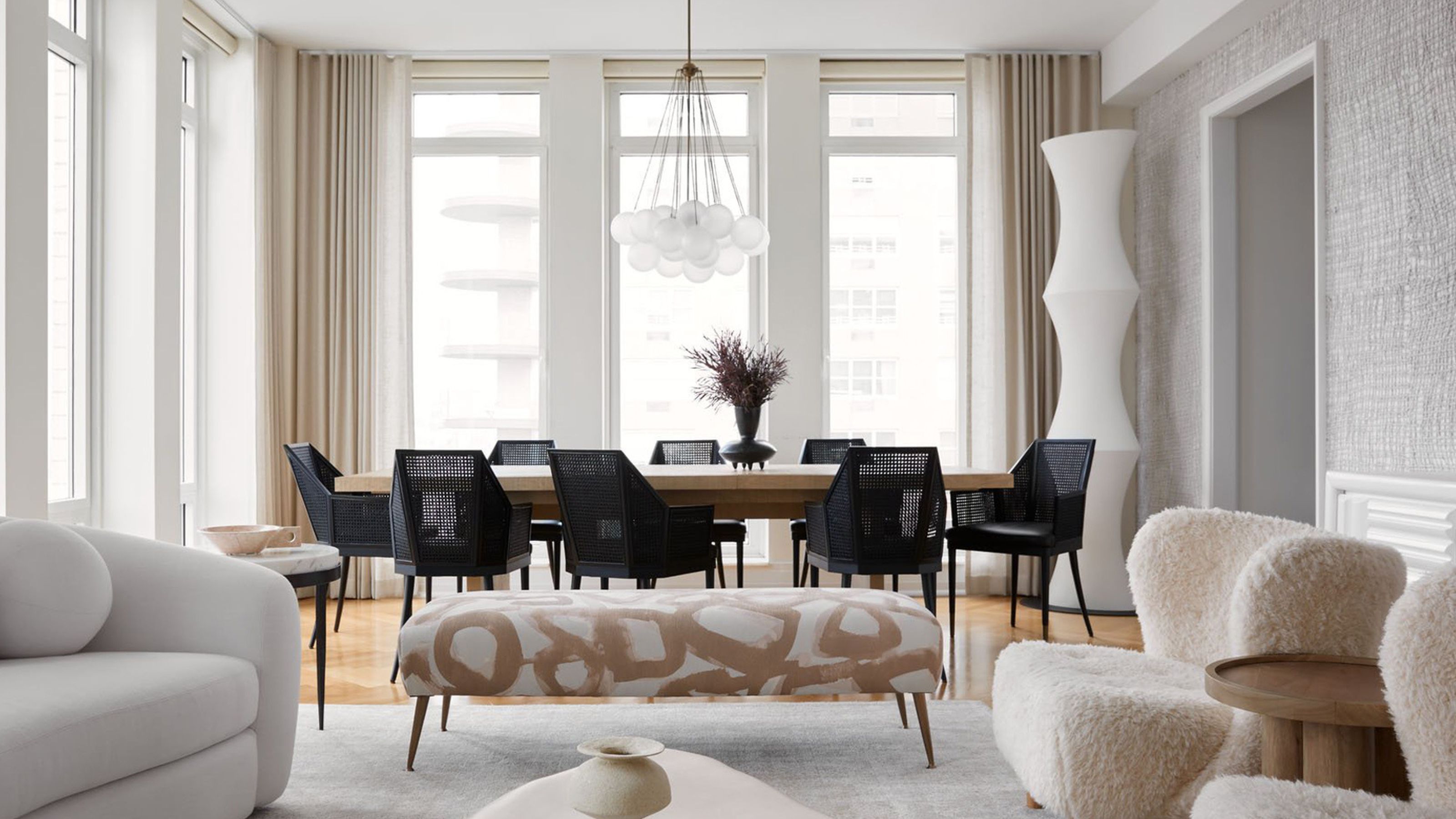How to Plan the Perfect Lighting Scheme for Your Home — From Start to Finish in 9 Simple Steps
Our step-by-step guide is a foolproof way to get your home's lighting scheme just right — and it's important


It can feel extraordinarily daunting when first looking into how to plan your house's lighting scheme — there is just so much to think about, and all kinds of decisions, some seemingly miniscule, to be made. What's more, getting them wrong can be catastrophic.
There is far more to a good lighting scheme than following the latest lighting trends. Everything from the size of your room to the amount of natural light it receives needs to be taken into account, as does the way in which you plan on using each individual space.
Our lighting planning guide is here to take you through each and every step in designing and implementing a lighting scheme that will fulfil your every need, as well as ensuring your home looks great, both night and day. So, here's what you need to know.
1. Begin by assessing your lifestyle

Choosing the right kinds of light fittings and where they will be located should never be a snap decision. The initial stages of planning a lighting scheme are the most important of all, whether you are looking into how to plan living room lighting, or are dealing with a child's bedroom.
"Sit down and think about your house goals and lifestyle. You need to describe what functions you want the house to fulfill, what your needs are, what each room will be for, and what you will do there," explains Evelina Juzėnaitė, principal interior designer at Planner 5D. "How do you spend your mornings or evenings, what kind of lighting do you like in your home now, and what kind you don't like?
"For example, in the bedroom, you need additional lighting for reading books and soft LED lighting, so that you don't have to turn on the 'big light' when your partner is sleeping," continues Evelina. "And in the kitchen I definitely need lighting under the upper units as I am more comfortable cooking this way."
It is also important to think about how you want each space to 'feel'. The kind of light that suits a practical space, for example, is very different to that suitable for a sociable area such as the living room.
"Is it warm and inviting? Bright and energizing?" says advises Lior Kahana, operations manager at 123 Remodeling. "I like to imagine the flow of daily life through the house — how natural light changes each space during the day and what activities will take place in each room. This big-picture view helps you make lighting choices that support form and function."
And then there is a the practical elements to consider, such as the wiring in your space. "Planning a lighting scheme requires balancing technical expertise with the homeowner’s lifestyle and design preferences," explains experienced electrician and HVAC expert Sergey Nikolin, president at Product Air Heating & Cooling LLC. "I start by conducting a detailed walkthrough with the client, identifying how each space is used. I then highlight areas where layered lighting — ambient, task and accent — can create flexibility and functionality."
2. Plan lighting location before placing furniture

Next, you need to come up with a detailed plan of where each light will need to be fitted in every room. "Lighting should be planned before you buy furniture," says Evelina Juzėnaitė. "At the design stage of the project it is better to draw all the outlets, switches and lights, to know that not one will not interfere with another."
While you might want to plan the location of lights before purchasing furniture, it is good to have a rough idea of where seating and so on will be in a room. For example, once you have firmed up your living room layout ideas, you are better placed to think about which lights will be needed where.
"Decide where ceiling fixtures, wall sconces, outlets and switches will go based on furniture placement and how you’ll use each space," adds Lior Kahana. "For example, kitchen lighting design needs task lighting, while living rooms benefit from layered, ambient light. Floor outlets in open areas work perfectly for lamps, and placing switches near doorways or beside beds makes them much more convenient. A little thought upfront can save you from the frustration of tangled cords or poorly placed switches later."
And when it comes to working out the best placement for switches, Sergey says to "Focus on placement that minimizes glare and shadows, especially in kitchens and workspaces. Plan for visual hierarchy and think about how lighting can guide the eye through a space."
He also recommends thinking about how you can strategically highlight key architectural features in a space through your lighting plan, "such as alcoves or beams, using concealed LED strips [from Amazon] or directional spotlights [also from Amazon]."
3. Confirm whether you want smart lighting

Now is a really good time to think about what kind of automated lighting — if any — you want to incorporate into your scheme, as this will need to be relayed to your electrician in order to ensure you have the right wiring in place.
"Start by assessing your home's current overall wiring capacity — modern lighting systems, especially smart ones, may require upgrades," flags Sergey Nikolin. "Before choosing smart lighting, confirm your Wi-Fi signal reaches all rooms and consider mesh networks for seamless control."
While it may seem scary at first, smart lighting is one of the most exciting (and underrated) advancements in home design, says Lior Kahana. "I love how it lets you program lighting scenes to match your lifestyle. You can go from a bright and energizing set-up for mornings to a soft, ambient glow for relaxing evenings. Control can be as simple as an app or a voice command.
"If you’re adding smart lighting, plan for hubs, Wi-Fi extenders or smart switches early on," advises Lior. "These elements usually require additional cabling and need to be part of the rough-in process."
Bear in mind too that even simple smart bulbs, such as the Amazon Basics Smart A19 LED Light Bulb, can make all the difference to a scheme and require no additional wiring.
4. Decide on the location of outlets and switches

It isn't just your light fixtures that need placing — a large part of any successful scheme lies in well-planned switches and electrical outlets.
"Evaluate the interior where you live now — where do you lack outlets, where do you have them but don't use them?" says Evelina Juzėnaitė.
"For sockets, don't just think 'enough outlets' but more in terms of 'convenient outlets,' adds Sergey Nikolin. "Prioritize locations where chargers, holiday lighting, or even future tech might be needed. Think holistically about socket placement, ensuring accessibility near desks, reading chairs or kitchen counters where appliances could share outlets."
And then there is the design to consider. You can either find ways to hide power outlets in your space, or dress them up and make a feature of them with stylish outlet cover plates.
5. Work with your electrician at the framing stage

Once you have a plan of where light fixtures, outlets, and switches will be needed, your electrician can start the process of getting your wiring in place. If you are keen to create a minimalist finish, look into hiding electrical sockets too.
"Work closely with your electrician to run wiring during the framing stage," advises Lior Kahana. "This is when recessed lighting, chandeliers, or exterior lighting cables are installed."
"Leave room for flexibility, such as adding dimmers or extra circuits for future smart upgrades," adds Sergey Nikolin. "And even if you're not adding smart systems or advanced controls now, plan your wiring for adaptability — think conduit pipes or additional junction boxes for future upgrades. Consider layering circuits too so you can independently control zones within a single room, offering more flexibility in ambiance and energy usage without rewiring later."
"Before the walls are closed up, I always walk through the space to double-check that outlets, switches, and fixture placements are exactly where they need to be," says Lior Kahana. "It’s the last chance to make adjustments without incurring extra costs."
6. Choose a selection of light types for each room

Now is the time for one of the best bits — choosing your lights. It is never a good idea to fit just a single light in a room — a combination of different lighting types works much better and allows more flexibility, whether you are working out how to light a dining room or any other space in the home.
A layered approach to lighting is best as it allows you use a single space in a number of different ways. "There are three layers of lighting that can benefit every room," explains Lior Kahana. "Ambient lighting sets the tone with overhead fixtures or recessed lights that illuminate the whole space. Task lighting provides focused lighting for specific activities and includes under-cabinet lights in the kitchen or reading lamps by the bed. Finally, accent lighting highlights features like artwork, shelving or architectural details. This layer is about adding personality to a space."
Accent lighting is possibly the most creative, and can include elements like LED strip lighting, or hidden floor lights.

Price: $169.99
Perfect as an ambient light source, this contemporary chandelier features six glass sphere shades which are complemented beautifully by the brushed brass finish. Even better, it is dimmable, allowing you to create a range of different moods.

Price: $795
Not only is this striking side lamp super chic, with its milky pink glass shade and subtle brushed brass details — it also makes the perfect source of task lighting for reading or carrying out work. It is suitable for use with dimmable bulbs and features a stylish nylon cord.

Price: $20.99
In many cases, the best sources of accent lighting are hidden from sight, subtly highlighting architectural details or focal points, without competing for attention. This 16.4ft roll of warm LED lights can be adjusted in brightness via remote control and are easy to fit.
7. Don't forget to consider color temperature

A quick point to note here — colour temperature really matters, particularly if you are wondering how to make bedroom lighting cozier.
Measured in Kelvins (K), color temperature is determined by the bulbs you use. Temperatures are cool (5000-6500K) neutral (3500 - 4100K) and warm (5000-6500K).
"Match lighting temperatures to the purpose of each space," says Sergey Nikolin. "For instance, cooler tones can promote focus in home offices, while warmer tones encourage relaxation in living areas."
"Warm white LEDs work well in living rooms and bedrooms for a cozy vibe, while cooler tones are ideal for kitchens or home offices," adds Lior Kahana.
8. Make small adjustments

Once your new lights have been fitted, there may be a few tweaks that need to be made in order for you to be totally happy with your new scheme. Don't be afraid to ask for them now, or you'll likely live to regret not saying anything.
"Once the lights are installed, you should take time to see how they function throughout the day," explains Lior Kahana. "Lighting can look very different in the morning versus the evening. Simple tweaks — like repositioning a lamp, swapping a bulb for a warmer tone or adding a dimmer — can completely transform how a space feels. This step is about making sure the lighting enhances the room and how the space is used."
FAQs
Do all your lights all need to match throughout your home?
When it comes to the actual design of your light fittings, much of this comes down to personal preference, although there are a few pointers that can help when it comes to choosing. Whether you are choosing table lamps for a living room or your overhead options, think about how they will work alongside one another.
"Your lights don’t all need to match, but they should feel cohesive," suggests Lior Kahana. "I often recommend keeping finishes like brass, black, or nickel consistent across fixtures while allowing the styles to vary. For example, sleek pendants in a modern kitchen can pair beautifully with more traditional sconces in a hallway if the finishes connect the spaces."
Now you know how to achieve the perfect lighting scheme, be sure to look into the biggest mistakes when planning your lighting, to ensure you don't fall into any of the common traps.
Be The First To Know
The Livingetc newsletters are your inside source for what’s shaping interiors now - and what’s next. Discover trend forecasts, smart style ideas, and curated shopping inspiration that brings design to life. Subscribe today and stay ahead of the curve.

Natasha Brinsmead is a freelance homes and interiors journalist with over 20 years experience in the field. As former Associate Editor of Homebuilding & Renovating magazine, Natasha has researched and written about everything from how to design a new kitchen from scratch to knocking down walls safely, from how to lay flooring to how to insulate an old house. She has carried out a number of renovation projects of her own on a DIY basis and is currently on the lookout for her next project.
-
 The 'New British' Style? This Victorian London Home Embraces Its Owners' Global Background
The 'New British' Style? This Victorian London Home Embraces Its Owners' Global BackgroundWarm timber details, confident color pops, and an uninterrupted connection to the garden are the hallmarks of this relaxed yet design-forward family home
By Emma J Page
-
 Muji Living Room Ideas — 5 Ways to Harness The Calming Qualities of This Japanese Design Style
Muji Living Room Ideas — 5 Ways to Harness The Calming Qualities of This Japanese Design StyleInspired by Japanese "zen" principles, Muji living rooms are all about cultivating a calming, tranquil space that nourishes the soul
By Lilith Hudson
-
 7 Dining Room Lighting Mistakes That Could Be Making Your Space (and Food) Look Less Appetizing
7 Dining Room Lighting Mistakes That Could Be Making Your Space (and Food) Look Less AppetizingExperts share how to save yourself time and trouble by avoiding these common dining room lighting mistakes
By Natasha Brinsmead
-
 Ignoring These 7 Living Room Lighting Mistakes Could Totally Ruin the Way You Feel in the Space, Warn Design Experts
Ignoring These 7 Living Room Lighting Mistakes Could Totally Ruin the Way You Feel in the Space, Warn Design ExpertsEven the fanciest furniture can look cheap under bad lighting — here, experts share the most common faux pas when it comes to lighting your living spaces
By Natasha Brinsmead
-
 How to Plan Bathroom Lighting That Can Switch Between Bright and Busy, and Spa-Like in Seconds
How to Plan Bathroom Lighting That Can Switch Between Bright and Busy, and Spa-Like in SecondsOur expert-led guide to bathroom lighting gives you everything you need for a perfectly-lit space
By Natasha Brinsmead
-
 How to Plan Your Entryway Lighting — For a Foyer That Makes a Good First Impression
How to Plan Your Entryway Lighting — For a Foyer That Makes a Good First ImpressionLighting experts give us the lowdown on how you can illuminate your home while elevating your space
By Natasha Brinsmead